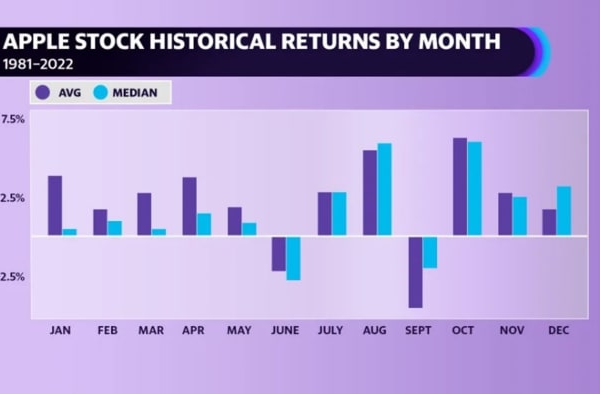Apple Watch Saves Lives: Remarkable Life-Saving Features

The Apple Watch saves lives in numerous ways, showcasing its advanced health monitoring and emergency functions that protect users around the globe. With features like a heart rate monitor and Fall Detection, this remarkable device has transformed from a stylish accessory into a critical health tool, assisting individuals in identifying potentially life-threatening conditions. From warning users about undiagnosed heart issues to calling for help during emergencies, the real-life stories of those saved by the Apple Watch highlight its incredible capabilities. By continually evolving its health features, Apple demonstrates a commitment to enhancing the safety and well-being of its users. In an era where health awareness is paramount, the Apple Watch stands out as a lifesaving companion that makes a difference in urgent situations.
Apple’s smartwatch, often referred to as the health-centric wearable, plays a pivotal role in enhancing well-being and offering crucial emergency responses. Equipped with innovative tech, this wearable device provides a range of health monitoring capabilities that not only track fitness but also detect serious medical conditions in real-time. With features specifically designed for emergency situations, such as Fall Detection and heart rhythm alerts, the device acts as a personal health assistant on your wrist. Users often share their powerful life-saving stories that underscore its impact, reinforcing the idea that this gadget is more than just a timekeeper. As technology progresses, this health-focused smartwatch continues to evolve, promising to help many more individuals in critical times.
The Life-Saving Potential of the Apple Watch
The Apple Watch has evolved into an indispensable health tool, providing users with critical health monitoring features that track vital signs in real-time. Its capabilities extend beyond just fitness tracking; it can alert users to severe irregularities in their heart rates that could indicate life-threatening conditions. In recent years, users have shared numerous anecdotes illustrating how the watch’s heart monitor has detected issues like atrial fibrillation, leading to early medical intervention that ultimately saved lives. These intuitive alerts empower individuals to seek medical help promptly, demonstrating the vital role technology can play in health management.
With its health-focused innovations, Apple has cemented the Apple Watch’s status as a lifesaver. Features like the ECG monitor are not simply trendy—they provide tangible benefits by enabling early detection of cardiac events. From identifying coronary blockages to enabling heart rate notifications, the Apple Watch’s health features work in synergy to offer a comprehensive safety net for users. Each instance of a saved life underscores the potential of smart technology to improve health outcomes, showcasing how the Apple Watch has become so much more than a mere gadget.
Apple Watch Health Features: A Lifeline During Emergencies
The Apple Watch is not just a fitness tracker; it serves as a lifeline during emergencies with its in-built features like Emergency SOS and Fall Detection. These functionalities automatically call for help when it detects a hard fall or when users are in distress, ensuring that medical assistance arrives promptly. For many, these safety features are not just an added convenience—they have been crucial in saving lives, especially among aging populations or individuals with chronic health issues. The ability of the watch to contact emergency services under such critical circumstances reflects its invaluable role in personal safety.
Beyond falls, the Apple Watch is designed to protect users in a variety of scenarios. For instance, the Crash Detection feature can identify severe car accidents and automatically notify emergency services, ensuring a swift response. This proactive approach to health and safety sets the Apple Watch apart from other fitness devices. As more users explore these functionalities, there are increasing reports of lives saved due to these emergency mechanisms, reinforcing the idea that the Apple Watch is sophisticated technology with genuine lifesaving capabilities.
Heart Monitoring: The Apple Watch’s Key to Detection
Heart health is imperative, and the Apple Watch has emerged as a pivotal device in monitoring conditions like atrial fibrillation. Utilizing advanced sensors, the watch provides real-time heart rate monitoring and can flag abnormalities that may go unnoticed by the wearer. This mechanism is particularly beneficial for individuals who may be asymptomatic regarding various heart conditions, offering early warnings that encourage timely medical assessments. These heart-monitoring capabilities showcase how the Apple Watch helps users take charge of their health proactively, further enhancing its reputation as a lifesaving device.
Moreover, the success stories stemming from the Apple Watch’s heart rate alerts reinforce its importance in cardiovascular health. Users whose irregular heart rhythms were detected have consistently credited their watches with prompting vital medical interventions, preventing potential cardiac events. The impact of accurate heart monitoring and timely alerts cannot be overstated, as these features are literally changing lives for the better. As healthcare technology continues to advance, tools like the Apple Watch remain at the forefront of preventative health care.
Life-Saving Stories: Real-Life Impacts of the Apple Watch
Countless stories abound where the Apple Watch has played a crucial role in saving lives. For instance, several individuals have reported receiving alerts about their heart rhythms that led them to emergency medical support. Each of these narratives not only illustrates the device’s effectiveness but emphasizes the human stories behind the technology—revealing how a simple alert can lead to life-saving interventions. From young athletes to elderly users, the diverse populations benefiting from such features highlight the watch’s broad appeal and life-saving potential.
Additional accounts illustrate the watch’s versatility in emergency situations. In one instance, a swimmer caught in a sudden riptide was rescued thanks to the watch’s SOS functionality, showcasing how technology can bridge the gap between panic and safety. These personal testimonials serve as powerful reminders of the Apple Watch’s capability to detect potential health crises and call for help effectively. The device has transformed from a simple accessory into an essential health guardian, amplifying the call for increased awareness of its life-saving potentials.
The Future of Health Monitoring with Apple Watch
As technology continues to innovate, the Apple Watch is poised to redefine health monitoring further. Future updates are expected to enhance its existing features, with developments possibly including additional capabilities for tracking blood glucose levels, blood pressure, and more advanced heart health measurements. Such advancements hold the promise of transforming daily health management, allowing users to monitor critical health metrics seamlessly. The commitment of Apple to health tech underlines the company’s objective of not only improving user experience but also significantly contributing to health outcomes on a global scale.
With the potential introduction of even more life-saving functions in future Apple Watch versions, users can expect a device that is increasingly equipped to handle health emergencies. These innovations will likely empower individuals to take proactive steps in managing their health, equipping them with tools to detect issues before they become critical problems. As Apple continues to expand its health functionalities, the Apple Watch is poised to play an even more pivotal role in saving lives in the years to come.
How Apple Watch Functions: Health Features Explained
The Apple Watch functions using an array of sophisticated sensors that monitor various health metrics, making it an indispensable tool for those focused on maintaining their well-being. The built-in heart rate monitor utilizes optical sensors to track heart rates continuously throughout the day, while the ECG feature provides electrocardiogram readings that help detect potential issues like AFib. Furthermore, the watch facilitates real-time alerts based on these readings, alerting users when something is amiss. This seamless integration of technology and health monitoring illustrates the Apple Watch’s commitment to user health.
These health features operate in conjunction with Apple’s cutting-edge software, enabling users to view their health data in easily digestible formats on their devices. By allowing users to track metrics over time, Apple enables proactive health management. Through regular monitoring, users can identify patterns that may require attention. The comprehensive capabilities of the Apple Watch affirm its role as more than just a smartwatch—it’s a pivotal component of a user’s health ecosystem, empowering them to respond quickly to health anomalies.
The Role of Technology in Personal Health Management
In a world where technology increasingly melds with healthcare, the Apple Watch serves as a prime example of how wearable technology is revolutionizing personal health management. With intuitive health functionalities, the watch not only encourages a more active lifestyle but also empowers users to take charge of their well-being. Tracking vital metrics—from heart rate to oxygen levels—offers invaluable insights that can lead to improved health outcomes, exemplifying the potential of wearable technology in everyday life.
More than just a fitness gadget, the Apple Watch contributes significantly to a user’s health journey, evolving according to the user’s needs. As people become more health-conscious, devices like the Apple Watch provide critical support in fostering healthier habits. Through continuous data collection and analysis, the watch plays a pivotal role in facilitating a more preventive approach to health care, where real-time insights can lead to timely actions. The importance of technology in health management continues to grow, and the Apple Watch is leading the charge.
Emergency Responses: How Apple Watch Assists in Crisis Situations
The Apple Watch’s ability to act rapidly during emergencies is a standout feature that has saved numerous lives. In precarious situations, users can engage Emergency SOS features, which provide immediate access to emergency services with just a few clicks. This capability is particularly essential for individuals who may find themselves in dangerous situations, unable to directly seek help—like during a severe fall or a car accident. The watch effectively becomes a beacon of safety, enabling swift responses that can be critical in life-threatening scenarios.
In addition to its SOS function, the Apple Watch’s precise GPS capability allows for accurately sharing user locations with rescuers, which greatly enhances the efficiency of emergency responses. This technological advantage means that help can be dispatched to exact coordinates, reducing the response time in critical situations. The stories of users effectively saved by these features underscore the Apple Watch’s role as a proactive tool for safety, making it an invaluable device for anyone concerned about their health and safety in unpredictable circumstances.
Apple Watch: A Transformational Device in Health Technology
Reflecting on how far the Apple Watch has come since its inception, it is clear that Apple has transformed the notion of a smartwatch into a life-saving health device. With each version release, Apple continues to incorporate features that address both everyday health tracking and critical health warnings. As users have learned about the watch’s capabilities, it has become a trusted ally in personal health journeys, accountable for hundreds of life-saving alerts and interventions in emergency situations.
Moreover, as we look toward the future, the potential advancements in health monitoring through the Apple Watch seem limitless. As Apple seeks to integrate even more sophisticated technology into its devices, users may soon have access to unprecedented health monitoring capabilities. This vision aligns with Tim Cook’s assertion that health innovations will be one of Apple’s most significant contributions to society. For many, the Apple Watch is not only a tool for fitness but a beacon of hope for better, more informed health management.
Frequently Asked Questions
How does the Apple Watch save lives with its health features?
The Apple Watch saves lives through its advanced health features, such as heart rate monitoring, ECG functionality, and Blood Oxygen tracking. These tools help detect irregular heart rhythms, blocked arteries, and other potentially life-threatening conditions, prompting users to seek medical attention before situations escalate.
What are some life-saving emergency functions of the Apple Watch?
The Apple Watch includes emergency functions like Fall Detection and Emergency SOS, which can autonomously alert emergency services and share the user’s location during critical situations. This capability has proven vital in accidents and medical emergencies, allowing for rapid intervention.
Can the Apple Watch detect serious health issues like heart problems?
Yes, the Apple Watch’s heart monitor features can detect serious health issues such as atrial fibrillation, coronary heart disease, and even early signs of other critical conditions, including pulmonary embolism and cancer. These alerts have led users to seek timely medical care.
What are some real-life stories of how the Apple Watch has saved lives?
Numerous life-saving stories involve the Apple Watch alerting users to high heart rates or irregular rhythms, leading to diagnoses of severe conditions like atrial fibrillation, heart surgery, and even cancer detection. Users have repeatedly credited their watches with saving their lives by prompting emergency visits.
How does the Apple Watch heart monitor contribute to health safety?
The Apple Watch heart monitor utilizes ECG and optical sensors to continuously track heart activity. It can alert users to signs of atrial fibrillation and other abnormalities, enabling early intervention that can prevent strokes and other serious health issues.
What is the significance of the Apple Watch’s Fall Detection feature?
The Fall Detection feature of the Apple Watch automatically detects if a user has fallen and contacts emergency services if they do not respond. This function is particularly critical for elderly users or individuals at risk of falls, ensuring swift assistance when it’s needed most.
Does the Apple Watch provide support for mental health emergencies?
While primarily focused on physical health, the Apple Watch can support mental health emergencies indirectly through its monitoring features, prompting users to seek help when they experience significant physical changes that may indicate stress or anxiety.
What advancements in health features can we expect from future Apple Watch models?
Future Apple Watch models may integrate even more advanced health monitoring features, such as blood glucose and blood pressure tracking. Such innovations could further enhance its life-saving capabilities, solidifying its role as a crucial health tool.
How does the Apple Watch’s SOS feature enhance personal safety?
The Emergency SOS feature allows users to contact emergency services quickly by pressing and holding the side button. This feature, combined with location sharing, greatly enhances personal safety and the chances of timely rescue during emergencies.
Why is the Apple Watch seen as a ‘silent guardian’ for its users?
The Apple Watch is considered a ‘silent guardian’ due to its ability to monitor health metrics continuously and react to emergencies without direct input from the user. Its proactive approach in notifying users about health risks or seeking help illustrates its potential to save lives.
| Health Issue | Detection Method | Importance / Risk Level |
|---|---|---|
| Atrial Fibrillation (AFib) | ECG app, irregular rhythm alerts | High (stroke risk) |
| High Heart Rate | Heart rate notifications | Moderate to High |
| Low Heart Rate | Heart rate notifications | Moderate to High |
| Cardio Fitness (VO2 Max) | Cardio Fitness feature | Moderate |
| Sleep Apnea / Sleep Issues | Sleep tracking, heart rate monitoring | Moderate |
| Blood Oxygen (SpO2) | Blood Oxygen app | Moderate to High |
| Falls / Inactivity | Fall detection, inactivity alerts | High (especially for elderly) |
Summary
The Apple Watch saves lives by offering crucial health monitoring features that alert users to potentially life-threatening conditions. Through its ability to detect heart problems, monitor blood oxygen levels, and provide emergency SOS functions, this innovative technology has proven to be a lifesaver for many individuals around the globe. As a result, the Apple Watch not only enhances personal health awareness but also serves as an essential tool in emergency situations, demonstrating its vital role in modern-day health technology.
You may also like

iOS App Store Success: A Milestone in Digital Distribution


First Email from Space: The Macintosh Portable’s Legacy
Archives
Calendar
| M | T | W | T | F | S | S |
|---|---|---|---|---|---|---|
| 1 | 2 | 3 | 4 | 5 | 6 | 7 |
| 8 | 9 | 10 | 11 | 12 | 13 | 14 |
| 15 | 16 | 17 | 18 | 19 | 20 | 21 |
| 22 | 23 | 24 | 25 | 26 | 27 | 28 |
| 29 | 30 | 31 | ||||